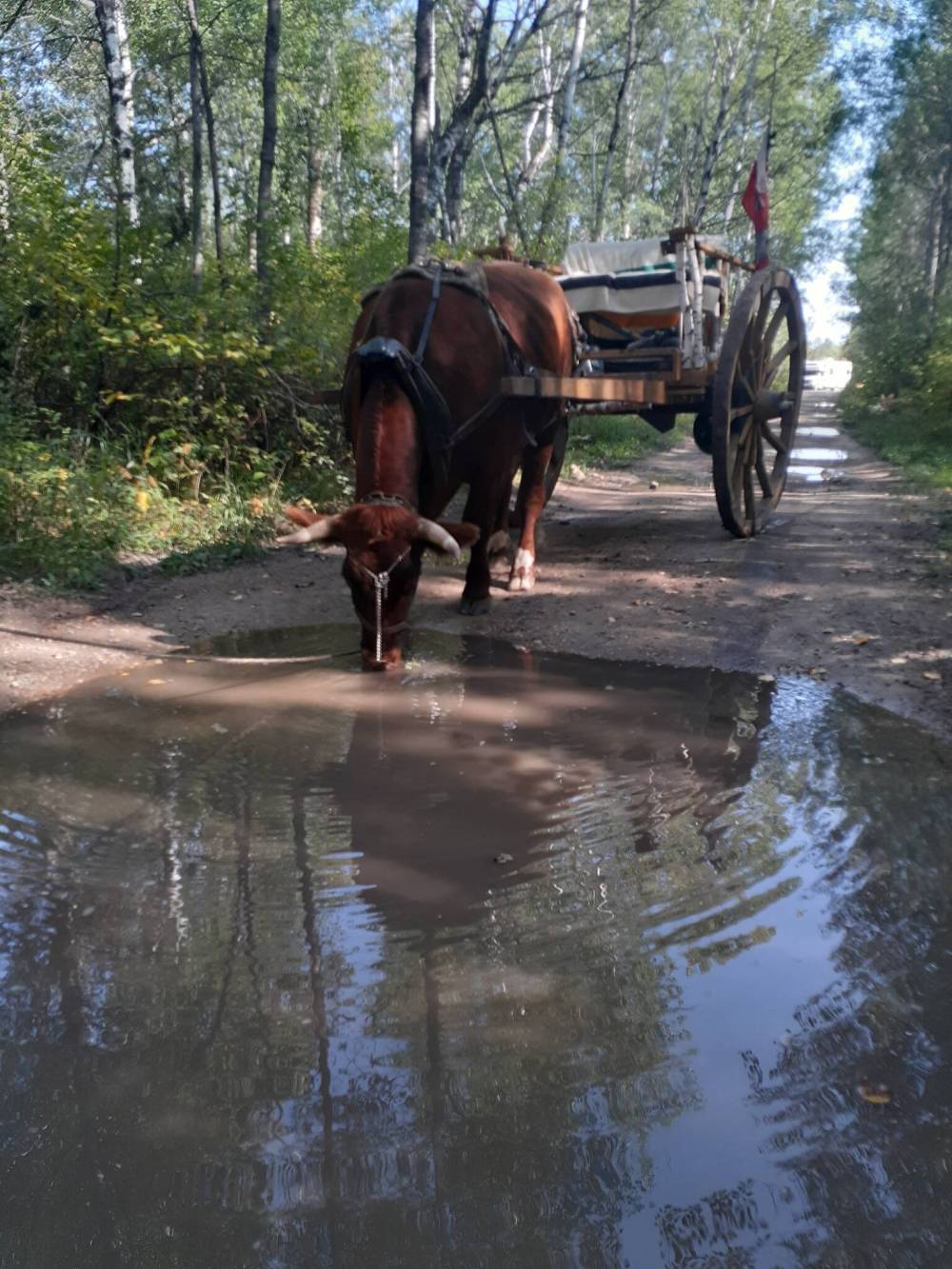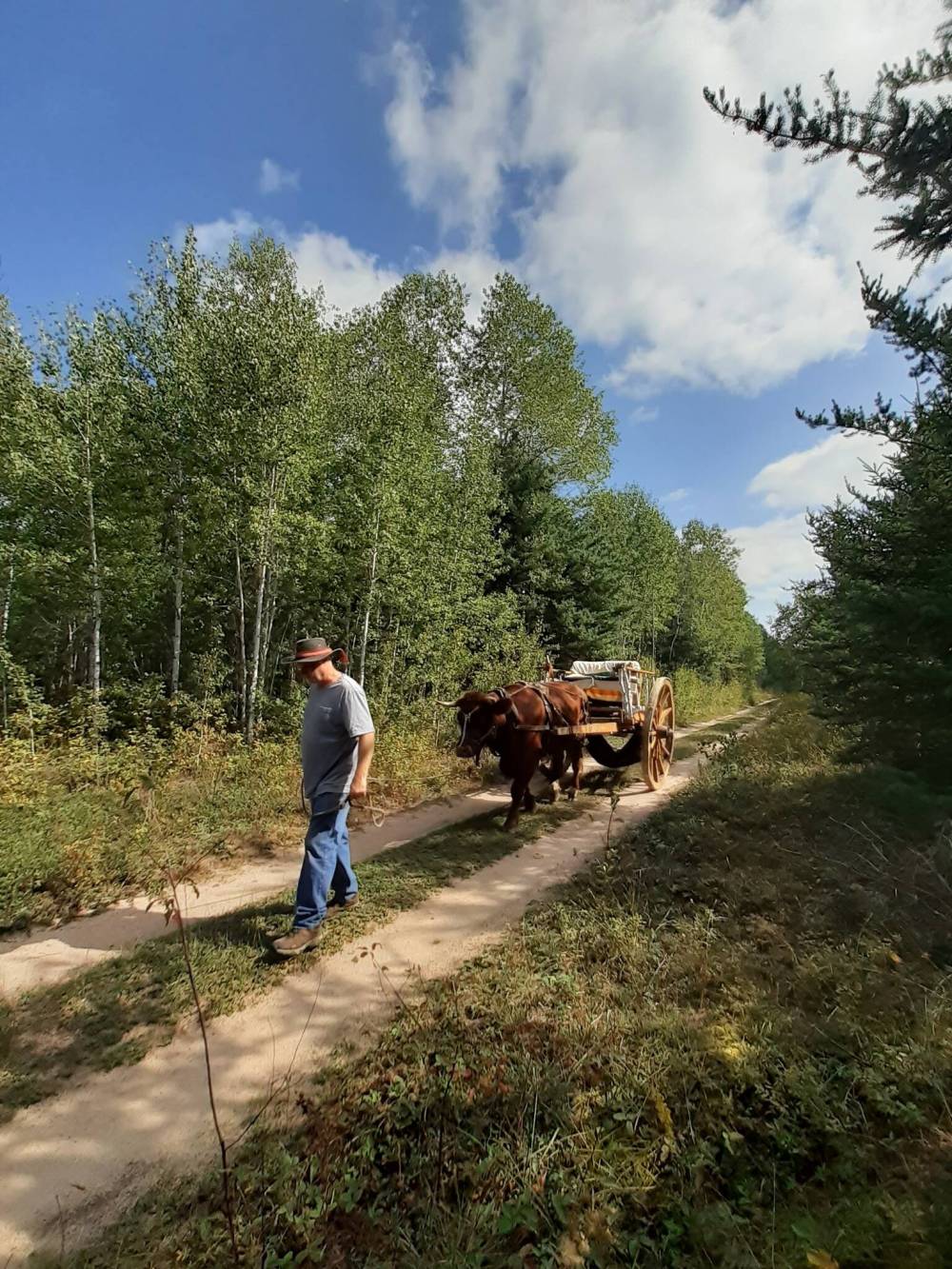Flying the flag Honouring the Father of Manitoba on the road between the Whitemouth and the Red
Read this article for free:
or
Already have an account? Log in here »
To continue reading, please subscribe:
Monthly Digital Subscription
$0 for the first 4 weeks*
- Enjoy unlimited reading on winnipegfreepress.com
- Read the E-Edition, our digital replica newspaper
- Access News Break, our award-winning app
- Play interactive puzzles
*No charge for 4 weeks then price increases to the regular rate of $19.00 plus GST every four weeks. Offer available to new and qualified returning subscribers only. Cancel any time.
Monthly Digital Subscription
$4.75/week*
- Enjoy unlimited reading on winnipegfreepress.com
- Read the E-Edition, our digital replica newspaper
- Access News Break, our award-winning app
- Play interactive puzzles
*Billed as $19 plus GST every four weeks. Cancel any time.
To continue reading, please subscribe:
Add Free Press access to your Brandon Sun subscription for only an additional
$1 for the first 4 weeks*
*Your next subscription payment will increase by $1.00 and you will be charged $16.99 plus GST for four weeks. After four weeks, your payment will increase to $23.99 plus GST every four weeks.
Read unlimited articles for free today:
or
Already have an account? Log in here »
Hey there, time traveller!
This article was published 23/09/2023 (820 days ago), so information in it may no longer be current.
In the summer of 2022, Winnipegger Terry Doerksen and his wife Patty, along with Zik the ox pulling their replica Red River Cart, retraced the 800-odd kilometres of the historic Red River Trail, from Winnipeg to St. Paul, Minn. This month, they tackled Dawson Road.
Dennis, my ox-driving sensei, kindly delivered my ox to where we waited at the Whitemouth River to start the second portion of our journey to Winnipeg. When he realized I wasn’t carrying a gun on this unpeopled stretch of the Dawson Road, Dennis asked what I’d do if I encountered a predator.
I replied that I planned to carry some barbecue sauce and, if I met a hungry bear, dump it on Zik. Of course Zik knew I was kidding. Many times I have stood between him and an aggressive dog.
I did become a little concerned when I saw huge wolf tracks all along the sandy road on that first day of ox cart travel. But from the Whitemouth to the Red, the lone slightly sketchy animal encounter occurred near Dufresne.
A pack of six large Newfiedoodles and their alpha, a pugnacious little pug, swarmed out from a farmyard. They kept feinting at Zik and then retreating with me running interference until both Zik and I were wondering if our defences could hold. Only when we were clearly outside the pack’s territory could our legs and hearts slow down a little.
Cam Ross attaches a replica of Louis Riel’s provisional government flag, with an assist from his wife, Rhonda. (Supplied)
Friendly fauna
Our human encounters were a lot more pleasant. An elderly man had stopped to stare at our rig a couple of times. At the third pass, he got out of his car with a couple of rusty old pails.
As he walked past me to the back of the cart I heard him mumble, “Now people won’t have to look at your white plastic bucket.” He was right. A Canadian Tire-branded five-gallon water bucket doesn’t really complement a Red River cart.
A little way down the road, Jerry introduced himself as a ‘commodities relocation expert’ with Bison Transport. Jerry’s real passion, though, is not driving a truck. His greatest joy comes from posing mannequins, typically dressed in Saskatchewan Roughriders jerseys, in driver-distracting scenes beside the Dawson Road. Apparently Jerry’s favourite trick is to sit stalk-still with the mannequins until an unsuspecting car slows down to enjoy the latest display. Suddenly Jerry jumps up and goes tearing down the ditch with the bewildered driver left to figure out what just happened.
Zik takes a break while traversing Dawson Road. (Supplied)
Closer to Lorette, a woman walked up to Zik and me. She could hardly contain herself. “Your cart and ox would look great beside my fur-trapper’s cabin.” Her place was quite a way off the road, and not as far down the Dawson as I had hoped to get that day, but I sensed this was where we were meant to spend the night. Michelle’s off-the-grid little cabin, full of furs, was nestled in a peninsula of the Seine River.
The outhouse in the back was the classiest establishment of relief I’ve ever visited, complete with a Leonardo da Vinci on the wall. Michelle claimed the painting was the original, but I doubt it. Mona Lisa’s smile looked more like a smirk as she watched me use the toilet.
Around the fire that evening Michelle told the story of how she had decided to come out from Winnipeg and mow the lawn that day, even though it didn’t need mowing. Then she sensed ‘Spirit’ urging her to walk out to the road. She looked up and had to rub her eyes at what she saw. An ox pulling a Red River cart!
The whole thing made a little more sense when I told Michelle about a ritual my wife Patty and I have every evening. We take time to ask Creator to guide us to exactly the right people and camping spot the next day. He always does. When we were leaving the cabin the next morning, Michelle told me not to clean up the cow pies. “They make me laugh!”
A requisite stop on our journey was to give obeisance to the King of the Road. Roger Godard and his gracious queen Yvonne, who runs the Dawson Trail Museum in Richer, have done more than anyone else to keep the memory of the Dawson Road alive. Mr. Godard got a little choked up when I paid my tribute — a large bridge nail and a lumpy rock I had found at the bottom of the Whitemouth River where the Dawson used to cross.
Well-versed reminiscence
In 1874, two years after the Free Press’s inception, a poem was printed in its eight-page daily edition. A traveller on the Dawson Road had submitted it after seeing some writing tacked to a fence post near Ste. Anne.
Stay weary traveller, thank your God
You’re safely over the Dawson Road;
I’m sure it will do you some good
To take a little rest and food
’Gainst mercies small, pray do not mutter
You’re welcome to this pork and butter.
Terry digs into salt pork and butter. (Supplied)
It seemed like a scene worth re-creating. I called up my friend at Timothy’s Country Butcher Shop — my source for ancient meats. Could he make me some salt pork?
True to form, Tim said he’d give it a try, and true to form, he didn’t charge me for it.
Neither did Dianne, my ox-driving sensei’s wife, charge me for the homemade butter. ’Gainst these mercies small I certainly would not mutter.
Are you wondering how the salt pork tasted? Definitely salty, but not bad, actually.
Homage to Riel
I’m a big fan of Louis Riel, an allegiance that made celebrating the Dawson Road a little awkward, knowing its first travellers were a 1,200-strong army sent from Eastern Canada to take Riel out. But perhaps a gift I had received would solve the dilemma. It was a flag, given to me by Cindy Desrochers, director of Le Musée de Saint-Boniface.
Manitoba’s current and provisional flag adorn the Red River cart. (Supplied)
You see, even as Col. Wolseley and his army were approaching, Riel believed they were coming to negotiate for a new province in good faith. Those around Riel didn’t share his conviction in the inherent goodness of men from the east, and urged him to flee.
Finally his friends got through to him. Riel’s last act before going into exile was to take down the flag of his provisional government which flew over Upper Fort Garry and entrust it to a friend for safe keeping.
That friend, and his descendants to this day, took the charge seriously. In fact, they have guarded that flag so diligently the rest of us aren’t exactly sure what it actually looks like. That said, the flag given to me by Cindy is likely a pretty close replica. My intention was to fly it from my Red River cart, high and proud, as we followed Wolseley into Winnipeg 150 years later.
It would be a statement that, despite the efforts of unsympathetic men, Riel’s vision for a new province and his concern for those who lived here could not be stamped out. Yet there was no way I, personally, would raise Riel’s flag again. But I knew someone who was worthy.
Patty’s niece, Rhonda, and her husband Cam Ross would be joining us for a couple days in Ste. Anne. Cam comes with a pretty solid pedigree. When Riel was asked to return from exile and fight for the Métis of Saskatchewan, Cam’s great-great-great-grandfather, Daniel Donald Ross, fought and died beside Riel at Batoche.
And Ross’s grandfather, according to family lore, was the one who invented the Red River cart. After tying a very special flag to a later model of that first cart, Cam Ross, the descendant of these valiant men, stood silent for a long while. The significance of what he had just done required time to absorb.
There is a large stone bust on the banks of the Red River at the end of the Dawson Road. Hint: it’s not a carving of Col. Wolseley. On Sept. 15, perhaps the last Red River cart to travel that Dawson Road arrived in front of the bust at Le Musée de Saint-Boniface. From the cart’s mast flew the first flag of our province, as well as its present one. Both honoured the man depicted in stone behind the flags: Louis Riel, the Father of Manitoba.








